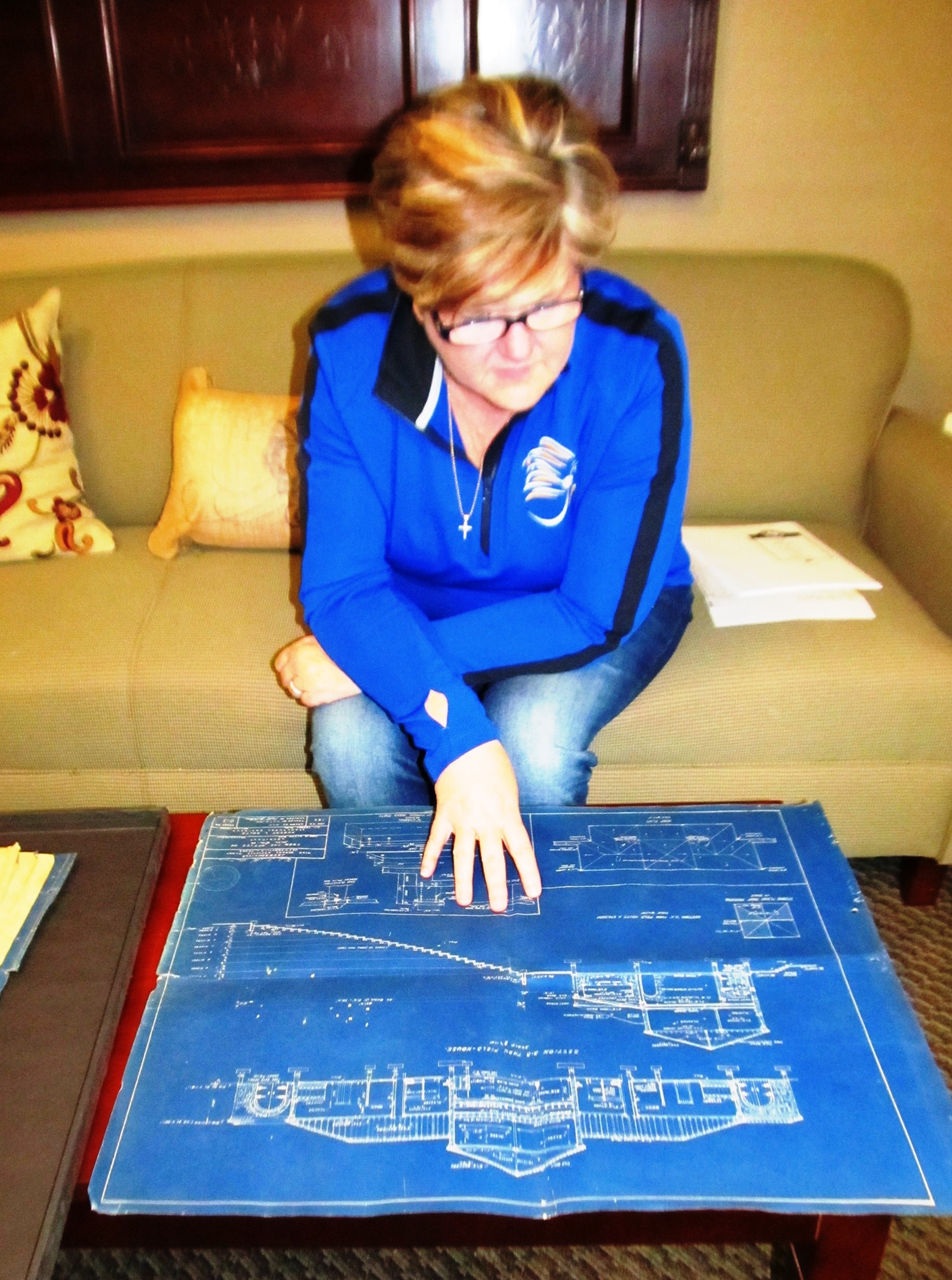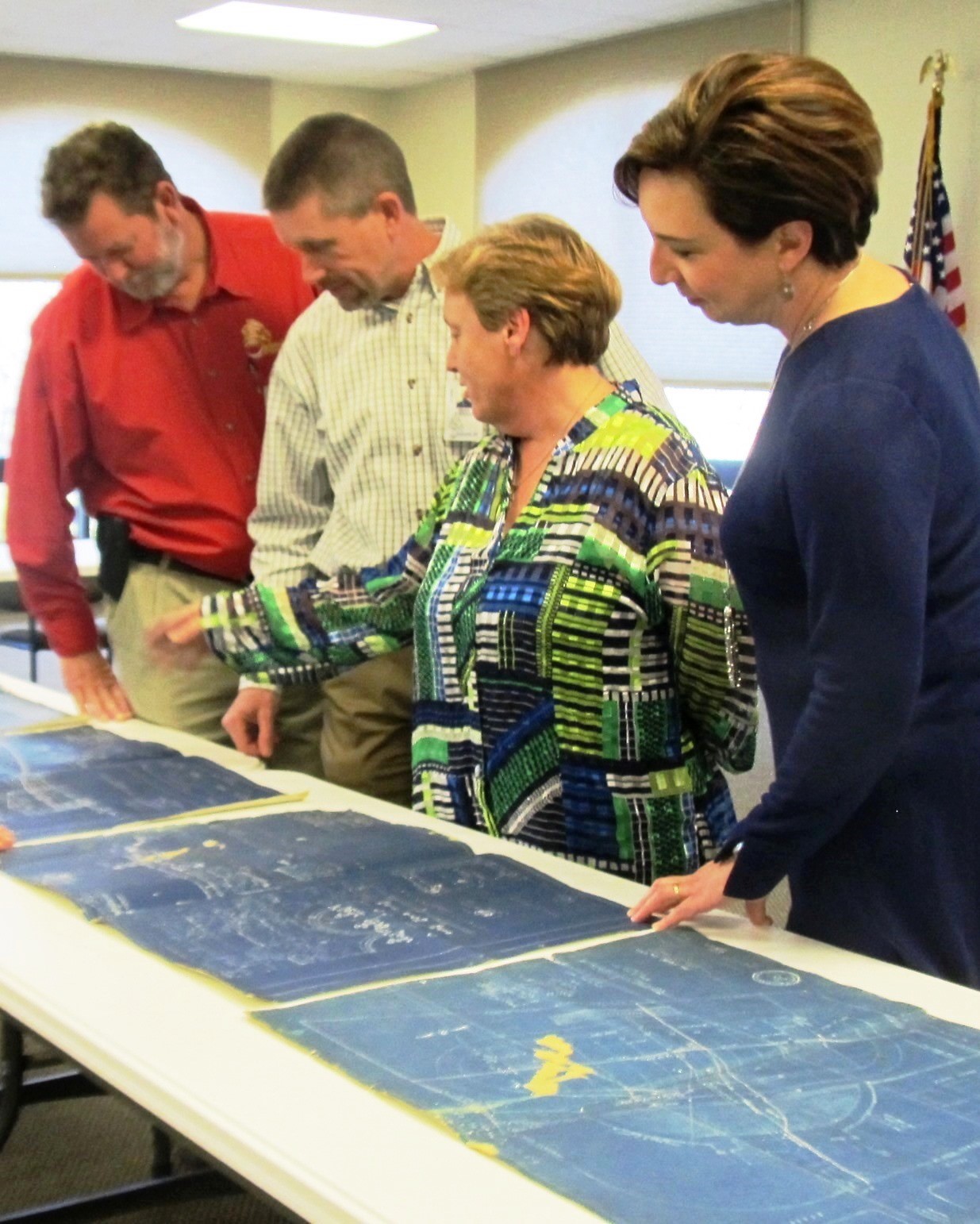Original Architectural Drawings of the Tomato Bowl
By Deborah Burkett
I love a good story, especially one relevant to county history. A saga that when its told, makes everyone say-"Wow!"
Imagine being at a garage sale, strolling along mindlessly, when something catches your eye--a slim 20 "by 24" green box lying on the floor with a $3.00 price tag. That's doable, you mutter.
Wondering what's inside-you open it and see drawings on blue paper-architectural designs for something. That something turns out to be the Jacksonville Tomato Bowl built in the late 1930s and early 40s by the Work Projects Administration (WPA).
As I said, "Wow."
The drawings were then given to Binda Caveness, a Jacksonville High School science teacher, known for her abiding interest in local history. Her friend who purchased the drawings knew Caveness was also a member of the Cherokee County Historical Commission (CCHC) and would carefully preserve the drawings.
But it wasn't till years later, amid current discussions about the future of the Tomato Bowl that the plans were located in the CCHC archives and shared with Grace Traylor, JISD Public Relations Director.
"Wow," was uttered once again when Traylor viewed the plans for the first time. She couldn't believe the detail of the drawings as CCHC member Deborah Burkett unpacked each sheet. "The drawings of the original doors are breathtaking," Traylor marveled.
Traylor immediately shared the news with Superintendent Kelly and planned a second meeting so Maintenance Director Tommy Wade could stop by and take a look. Wade was elated because the district only possessed only one drawing out of the set of 6.
Also attending this second meeting with Traylor, Burkett and Caveness were Brad Stewart (Assoc. Supt. Of Operations and Personnel), Karen Kubara (JHS Principal). Unable to attend was newly elected CCHC Chair Richard Hackney, who pledged his support.
Today its difficult to imagine this massive structure being approved and built during such trying times. In the late 1930s, Roosevelt was President, the Great Depression lingered on with unemployment at 16.9% and Hitler's Germany continued to show the world it was not afraid of anyone. Oil was discovered In East Texas, festivals were held--Rose and Tomato--all conducted with great pageantry, taking the edge off the Great Depression.
Putting things in context financially--the 1929 crash of the U.S. stock market, also known as Black Tuesday, is often regarded as the start of the Great Depression. The market lost over $30 billion in the space of two days, including $14 billion on October 29, 1929, alone.
Yet, in this unsettled climate, Jacksonville planned and executed the stadium with the help of the WPA--one of Roosevelt's New Deal programs designed to loosen the grip of stagnation in the country.
A Dallas architect was authorized by school officials to draw plans for the football stadium on the hilltop located on East Commerce Street. School Board trustees included: W.H. Brown, President, Charles F. Adams, Secretary, and W.E. Stone, W.W. Holman, Carl Williams, Carlton Odom and Leonard Hugghins. They authorized the application to the Federal Works Progress Administration.
Approval was granted August 1939, but work was delayed due to lack of funds for materials, until bonds totaling $20,000 were issued.
Work began in 1940, which also utilized materials from the demolished East Side School, as well as, red iron ore rocks from area farms.
Before competition of the stadium, the first athletic contest took place on September 27, 1940. Approximately 1,900 fans watched as the Fightin' Indians hosted the Dallas Tech Wolves.
Recently, as everyone mulled over the drawings, it was gratifying to witness the enthusiasm and dedication of Jacksonville educators that day. Currently the Cherokee County Historical Commission is working to get scans and copies made of the architectural drawings for the district--after all a good story is meant to be shared.
Interesting to note, visible signs of other WPA projects initiated during the 1930s can still be seen in Cherokee County. Notably are the Killough Monument and the Amphitheatre at Love's Lookout Park, which was formally opened during the 1936 Tomato Fest.
In closing, I will add one comment-a piece of advice for us all. Never pass up a garage sale. Historical treasures a wait!!!

Grace Traylor sees the drawings for the first time.

L to R: Wade, Stewart, Caveness and Kubara examine the drawings.